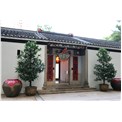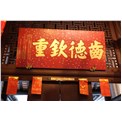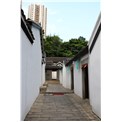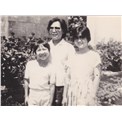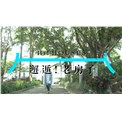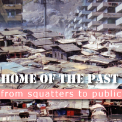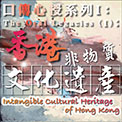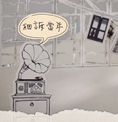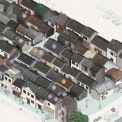-
History & Society
- Education in Pre-war Hong Kong
- History of Taikoo Sugar Refinery
- Hong Kong Products Exhibition
- Local Festivals Around the Year
- Post-war Industries
- Pre-war Industry
- The Hong Kong Jockey Club Archives
- Tin Hau Festival
- Memories We Share: Hong Kong in the 1960s and 1970s
- History in Miniature: The 150th Anniversary of Stamp Issuance in Hong Kong
- A Partnership with the People: KAAA and Post-war Agricultural Hong Kong
- The Oral Legacies (I) - Intangible Cultural Heritage of Hong Kong
- Hong Kong Currency
- Hong Kong, Benevolent City: Tung Wah and the Growth of Chinese Communities
- The Oral Legacies Series II: the Representative List of the Intangible Cultural Heritage of Hong Kong
- Braving the Storm: Hong Kong under Japanese Occupation
- A Century of Fashion: Hong Kong Cheongsam Story
Geography & EnvironmentArt & Culture- Calendar Posters of Kwan Wai-nung
- Festival of Hong Kong
- Ho Sau: Poetic Photography of Daily Life
- Hong Kong Cemetery
- Sketches by Kong Kai-ming
- The Culture of Bamboo Scaffolding
- The Legend of Silk and Wood: A Hong Kong Qin Story
- Journeys of Leung Ping Kwan
- From Soya Bean Milk To Pu'er Tea
- Applauding Hong Kong Pop Legend: Roman Tam
- 他 FASHION 傳奇 EDDIE LAU 她 IMAGE 百變 劉培基
- A Eulogy of Hong Kong Landscape in Painting: The Art of Huang Bore
- Imprint of the Heart: Artistic Journey of Huang Xinbo
- Porcelain and Painting
- A Voice for the Ages, a Master of his Art – A Tribute to Lam Kar Sing
- Memories of Renowned Lyricist: Richard Lam Chun Keung's Manuscripts
- Seal Carving in Lingnan
- Literary Giant - Jin Yong and Louis Cha
Communication & Media- Hong Kong Historical Postcards
- Shaw Brothers’ Movies
- Transcending Space and Time – Early Cinematic Experience of Hong Kong
- Remembrance of the Avant-Garde: Archival Camera Collection
- Down Memory Lane: Movie Theatres of the Olden Days
- 90 Years of Public Service Broadcasting in Hong Kong
- Multifarious Arrays of Weaponry in Hong Kong Cinema
-
History & SocietyGeography & EnvironmentArt & Culture
-
View Oral History RecordsFeatured StoriesAbout Hong Kong Voices
-
Hong Kong MemoryHi! Houses: A Journey into the History of Century-old Houses with the ArtistsRecently Visited
Into an Elusive Dream: Jaffa Lam's Invitation to the Accidental Traveller at Sam Tung Uk
A poignant reminder of a migrant clan
Walking through the old buildings and studying the preserved structure, Jaffa Lam pictured in her mind’s eye scenes of the Chan clan when they first arrived in Hong Kong: building their clan in Tsuen Wan for a lifelong residence, enjoying the cool breeze while resting on the stone stools outside the side houses, with the children romping and the domestic animals lowing. She pondered what their feelings were when they were about to leave their native soil. As she watched the Sam Tung Uk, Lam reminisced with some wistfulness the migration tracks of the Hakka people – how they had to leave their hometowns for survival and finally arrived in Hong Kong after several moves southwards, and how, due to urbanisation, they had to leave these old houses as well. It was a rootless, drifting life throughout their clan’s history.
To Lam, the term ‘Hakka’ suggests stories after stories of migration. “To be precise, the Hakkas were those who migrated southwards during the Song Dynasty; the Hokkien and the Chiu Chow, those who moved to south of the Yangtze during the Tang Dynasty; and the Cantonese, those who moved to South China during the Qin and Han dynasties. Strictly speaking, they were not ‘natives’ of Hong Kong, but all ‘guests’. It was only after they had settled for a period of time, they became the ‘hosts’.” Lam has first-hand experience of the hardships of migration from an early age. She had to begin behaving like a Hong Kong person ever since she moved here at the age of twelve. “The Hong Kong economy took off in the 1980s. Most of the people in Hong Kong were wealthy but we were just underprivileged immigrants. Mum told me not to disclose my origin or else I would be looked down upon. She said Hong Kong girls were very polite. They always said ‘please’ and ‘thank you’, and they knew how to speak in a mild-mannered way without offending anybody. When I was little, there was a time I stopped talking altogether unless it was absolutely necessary. I was shy about my accent and was afraid to offend.”
Having lived in Hong Kong for long enough, Lam now speaks fluent Cantonese and is chatty. Although she considers Hong Kong her home, she somehow feels she is still a guest. “When they ask me where I am from, I don’t know how to answer, like I'm from nowhere specifically. Though I speak Cantonese, English, Putonghua and a little Hokkien, none of them is my mother tongue. And I speak with an accent. The Fuding dialect that I spoke when I was little was forgotten long ago.” In her quest for an identity, she has a pained feeling that she has always been drifting from place to place, with nowhere that she can call home. This tugging pain is very much in sync with the poignant-sounding nanyin (the sad narrative singing of itinerant blind artists in the old days). Therefore, she wants to render in nanyin the Hakkas’ migration story while incorporating her own personal history, and play it in the exhibition. This is why she approached Steve Hui and Lee Man Sang, to join her in the project and inject some sounds of Hakka nanyin into it to make the story more complete and more touching for the visitors.
The present is also the past
To trace the history of Sam Tung Uk, Lam visited the Sam Tung Uk Resite Village, at Cheung Pei Shan in Tsuen Wan. She visited the village head to listen to his story of the old village. The village head took Lam back to Sam Tung Uk Museum and showed her where the animals used to be kept, where meals were taken and how the furniture was arranged, while telling story after story about the past.
Sam Tung Uk aligns the three halls along the central axis, with the halls separated by a courtyard in between. The Entrance Hall (Doorway Hall) is used to store carts, sedan chairs and sundry items; the Assembly Hall (Main Hall) is used for reception and assembly purposes; and the Ancestral Hall (Rear Hall) is at the back, an embodiment of the rules of hierarchy in Chinese ethical relationships. Before the construction of houses, the Hakka people would hire a feng shui (geomancy) master to ascertain the most auspicious alignment for the good fortune of the clan. As a starting point for the construction, a well would be dug in the courtyard in front of the Assembly Hall, the middle of the three main buildings. It would be designated as the centre, aligning with the ancestral altar and the main entrance along a central axis. The courtyard of the Assembly Hall constitutes an important feng shui element. There was a story that sometime back in the past, when an epidemic struck, they engaged a feng shui master to install a water tank formation in the courtyard, in front of the Assembly Hall, to ward off evil. This prompted Lam to re-create this formation by putting an installation related to water in the courtyard, right in front of the atrium, in harmony with sounds and dancing performances, so as to present the feel of water in a Hakka house.
In the past, whenever a male offspring was born, clansmen would light a lamp in the Assembly Hall, where the ‘Imperial Commendation for the Virtuous Elders’ plaque was hung high to uphold the honour of the clan and their ancestors’ edification for generations to come. Since the Assembly Hall is the place that witnesses the pioneering efforts of generations of the Chan clan in Hong Kong, Lam tries to imagine herself as a Chan descendant and what her emotions would be when she returns to this old house after many years. “On my homecoming, I would wish to revive the family’s name to uphold the teachings of my ancestors as the ‘Imperial Commendation’ plaque highlighted.” When Lam learnt that there used to be a couplet flanking the space under the plaque for edifying purposes, she decided to remake a couplet on the same spot. She commissioned contemporary calligrapher Chui Pui Chee to write the couplet and set it in moulded plastic. The plastic finish would give a transparent look that suggests a virtual reality of past and present.
Jaffa Lam believes that what the descendants of the Chan clan want to see is an old place full of memories. To reconstruct slices of life in the past, such as mealtimes and family members sitting around chatting, she places a revolving lamp on the traditional-style square table in the Period House of the third prime lineage family. She also installs video equipment on the kitchen stove, among the vats and earthen jars. This way, visitors would be able to savour family life of the bygone days through the moving images among the Hakka cooking utensils. She enhances the nostalgic remorse for a long-gone era by re-enacting a dream on the bed in the bedroom with a white gadget that ‘breathes’ and emits light, and projects images of stray retired cattles on the wall in reference to a past when man and animal shared the same living space. Along the meandering corridors, Lam plays Hakka nanyin music that is specially commissioned for this project. Such an acoustic interpretation of modern art in the historical site not only indicates that this was where the Chan gathered and lived for generations, but also strengthens the fact that Hakka nanyin is an intangible cultural heritage. Today, the Sam Tung Uk is turned into an ICH exhibition and resource centre. Lam’s installation, therefore, is a link between the past and the present.
“ ‘Hak’ (guest) and ‘ka’ (home) signify a special relationship. The Chan clan came to Hong Kong as guests; after they had built a home here, they became its hosts. Today, I create an artwork here and become the ‘host’, telling a story to the visitors who come here for the exhibition.” Jaffa Lam says. She focuses on this point of space and time, and alternates between the roles of ‘host’ and ‘guest’. She teases out the scenes of life in the 1980s which not only recounts the lives of the Hakka clansmen and the achievements of their ancestors but also creates an illusory time warp that swirls around the painted walls and grey roof tiles, as it tells the story of a generation of Hong Kong residents of yesteryear.
Photos
Copyright © 2012 Hong Kong Memory. All rights reserved.






